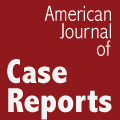The influence of simvastatin in high dose and nifedipine on myocardium in rabbits. The biochemical and histopathological study. Statin-myopathy and rabbit myocardium
Magdalena Jasińska, Jacek Owczarek, Marzena Ratyńska, Anna Zielińska, Krystyna Marek, Michał Karasek, Daria Orszulak-Michalak
Med Sci Tech 2005; 46(4): RA31-38
ID: 881476
Available online:
Published: 2005-07-16
Introduction: Recent findings in vitro have shown that statins could reduce cardiomyocyte viability. The correlation between statin cardiotoxicity, assessed in vitro, and cardiac efficiency, investigated in vivo has not been estimated so far. A
combination of pathological and biochemical studies were performed in myopathy model induced by simvastatin. The influence of combined administration of simvastatin with nifedipine, both metabolized by CYP3A4 izoenzyme was assessed too. Material and Methods: The experiments were performed on thirty-six New Zealand white rabbits. The animals were divided into four groups receiving: 0.2% MC (control group, n=9); nifedipine (1 mg/kg, n = 6); simvastatin (50 mg/kg, n = 10); nifedipine + simvastatin (n = 11), daily for 14 days (po). The following biochemical parameters were estimated: creatine kinase (CK), serum transaminase (ALT and AST), troponin I (TnI) and creatine kinase MB (CK-MB). Results: Simultaneous administration of nifedipine and simvastatin resulted in significant increase in CK as well as TnI – specific marker of cardiac injury, as compared to simvastatin alone. Only several lesions such as necrosis with single muscle degradation in myocardium were found. Conclusion: Administration of nifedipine may possess detrimental impact on statin therapy, resulting in the worsening of cardiac performance. It may suggest another mechanism of drug-drug interaction than the one based on CYP3A4 pathway if the impact on cardiac or skeletal muscle considered. (Clin. Exp. Med. Lett. 2005; 46(4):31-38)
Keywords: simvastatin, Nifedipine, troponin I, histopathological changes



